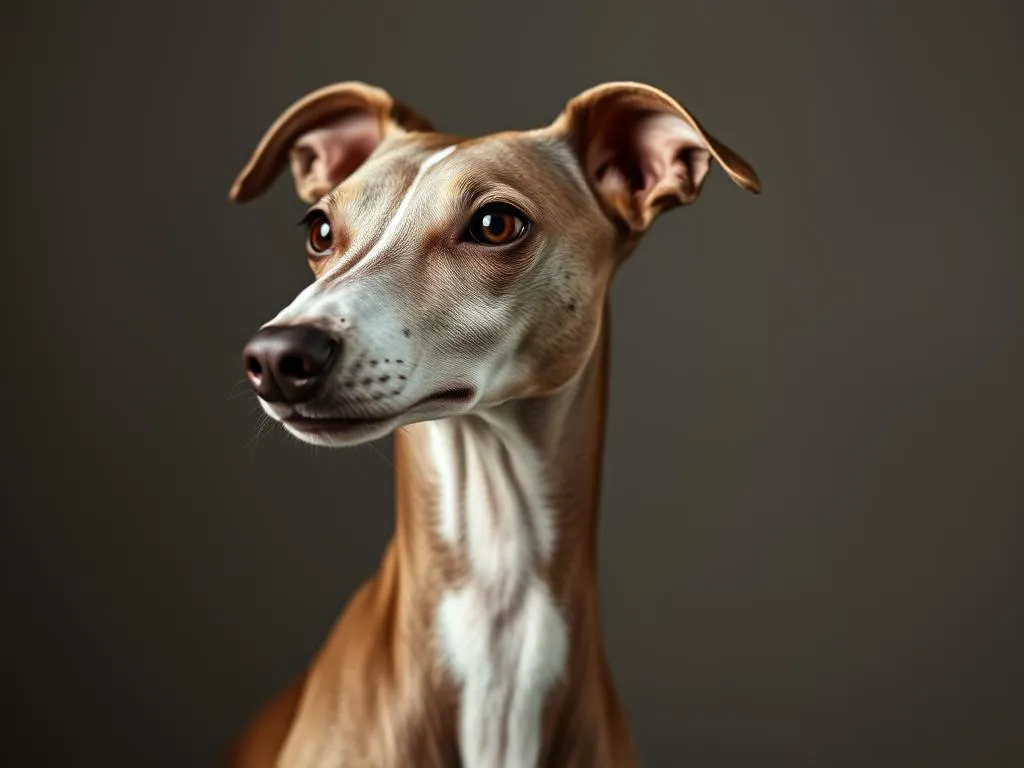
Introduction
The world of dog breeds is vast and diverse, with each breed possessing unique characteristics, histories, and temperaments. Understanding specific breeds is crucial for potential dog owners, as it helps them choose a pet that aligns with their lifestyle and preferences. Today, we’re focusing on the Italian Greyhound, a breed that combines elegance with playful charm. Learning about Italian Greyhound facts can give prospective owners valuable insights into what to expect when inviting this delightful dog into their homes.
Section 1: History of the Italian Greyhound
Origins
The Italian Greyhound has a rich history that dates back thousands of years. This breed is believed to have originated in the Mediterranean region, specifically Italy. Early depictions of a dog resembling the Italian Greyhound can be found in ancient Egyptian tombs, suggesting that the breed has been cherished for its companionship for quite some time.
Evolution Over the Years
Over the centuries, the Italian Greyhound has undergone various changes in breed standards. Initially bred for hunting small game, they eventually became beloved companions to the nobility and aristocracy. Their role in society shifted from practical hunting to adored pets, leading to the breed’s refinement. This evolution is reflected in their graceful stature and affectionate nature, which continue to endear them to families today.
Section 2: Physical Characteristics
Size and Weight
The Italian Greyhound is a small breed, typically standing between 13 to 15 inches tall at the shoulder and weighing around 7 to 14 pounds. This petite size makes them an excellent choice for apartment living, but they also thrive in homes with yards. When compared to similar breeds like the Whippet, the Italian Greyhound is generally smaller and more delicate in appearance.
Coat and Color
The Italian Greyhound boasts a short, smooth coat that requires minimal grooming. Common colors include fawn, blue, black, and cream, with some exhibiting markings or patterns such as white patches. Their sleek coat not only adds to their aesthetic appeal but also emphasizes their athletic build.
Distinctive Features
One of the most distinctive features of the Italian Greyhound is their long legs and slender body. Their elegant silhouette is complemented by a narrow head and large, expressive eyes. Males tend to have a more robust build than females, but both exhibit the same graceful demeanor.
Section 3: Temperament and Behavior
General Temperament
The Italian Greyhound is known for its affectionate and playful personality. They are typically gentle and friendly, making them excellent companions for families and individuals alike. Their adaptability allows them to thrive in various living situations, whether in a bustling city or a quiet countryside.
Socialization Needs
Socialization is crucial for the Italian Greyhound, particularly during their early developmental stages. Introducing them to different environments, people, and other pets helps them become well-rounded adults. They generally get along well with children and can form strong bonds with other dogs, although their delicate nature means they should be supervised during playtime.
Training and Intelligence
When it comes to training, the Italian Greyhound is intelligent but can also be somewhat independent. Positive reinforcement techniques work best for this breed, as they respond well to praise and treats. Consistency in training is vital, and early obedience training can lead to a well-mannered companion.
Section 4: Health and Care
Common Health Issues
Like all breeds, the Italian Greyhound is susceptible to certain health issues. Common concerns include dental problems due to their small mouths, hip dysplasia, and patellar luxation. Regular veterinary check-ups can help detect and manage these issues early on.
Life Expectancy
The average lifespan of the Italian Greyhound ranges from 12 to 15 years, which is typical for small breeds. Providing a healthy diet, regular exercise, and routine veterinary care can help maximize their lifespan.
Nutrition and Diet
Dietary requirements for the Italian Greyhound should focus on high-quality dog food, rich in protein and essential nutrients. Depending on their activity level, the amount of food will vary, but it’s crucial to monitor their weight as they can be prone to obesity. Consult with a veterinarian for recommendations tailored to your dog’s specific needs.
Grooming Needs
Grooming an Italian Greyhound is relatively straightforward. Their short coat requires minimal maintenance, but regular brushing can help reduce shedding. Bathing should be done as needed, typically every few weeks or when they become particularly dirty. Additionally, regular dental care is essential to prevent dental issues common in small breeds.
Section 5: Living with an Italian Greyhound
Exercise Requirements
The Italian Greyhound has moderate exercise needs. Daily walks and playtime are essential for keeping them healthy and happy. They love to run and play, making visits to a secure park ideal for them to stretch their legs. However, care should be taken to avoid overexertion, as they can be prone to injuries.
Space Considerations
While Italian Greyhounds can adapt to apartment living, they do best in homes where they have access to safe areas for play. A small yard or nearby park can provide a suitable environment for them to unleash their energy. It’s important to create safe spaces, as their slender bodies make them more vulnerable to injuries.
Traveling with an Italian Greyhound
Traveling with an Italian Greyhound can be enjoyable, but it requires some planning. They can be crate trained for road trips, and many are comfortable in carriers for flights. Always ensure they have a comfortable space and access to water during long journeys. Additionally, consider their temperament; some may feel anxious in unfamiliar environments, so gradual exposure to new places can help ease their nerves.
Section 6: Pros and Cons of Owning an Italian Greyhound
Advantages
Owning an Italian Greyhound comes with numerous benefits. They are affectionate companions, often forming deep bonds with their families. Their playful nature brings joy and entertainment to any household, making them ideal for families and singles alike. Additionally, their minimal grooming needs and moderate exercise requirements make them a practical choice for busy pet owners.
Challenges
However, potential owners should also be aware of the challenges associated with this breed. Their delicate build requires cautious handling, especially around young children or larger pets. Moreover, health issues, particularly dental problems and sensitivity to temperature extremes, can be a concern. Owning an Italian Greyhound requires a commitment to their care and well-being.
Section 7: Conclusion
In summary, the Italian Greyhound is a breed that brings together elegance, playfulness, and affectionate companionship. From their intriguing history to their unique physical characteristics and temperament, understanding these Italian Greyhound facts is essential for anyone considering bringing one of these charming dogs into their home. Their adaptability, combined with a loving nature, makes them a wonderful choice for many households. However, it’s crucial to consider their specific needs and characteristics before making the decision to adopt.
Section 8: Additional Resources
For those interested in learning more about the Italian Greyhound, there are several resources available. Books and guides specific to the breed can provide deeper insights into their care and training. Online communities and forums can also offer support and shared experiences from other Italian Greyhound owners. Finding reputable breeders and veterinarians who specialize in this breed is advisable to ensure you get a healthy puppy and the best care throughout their life.









